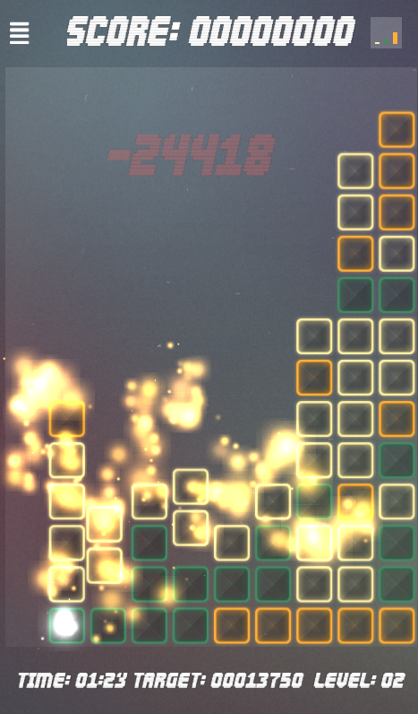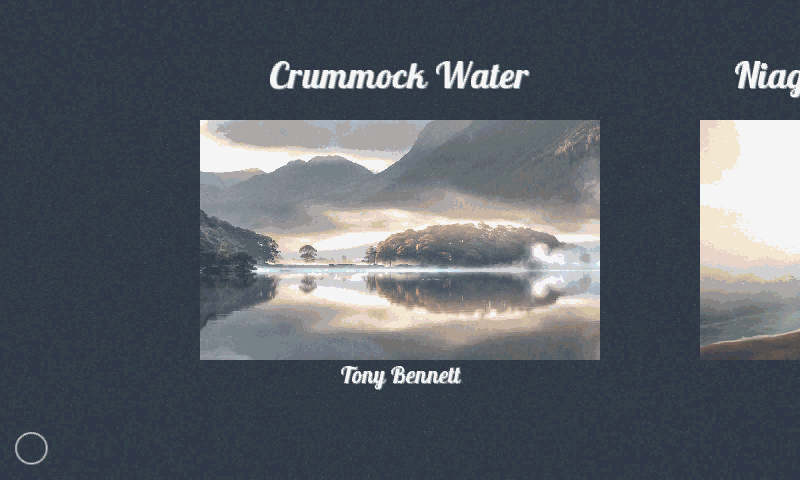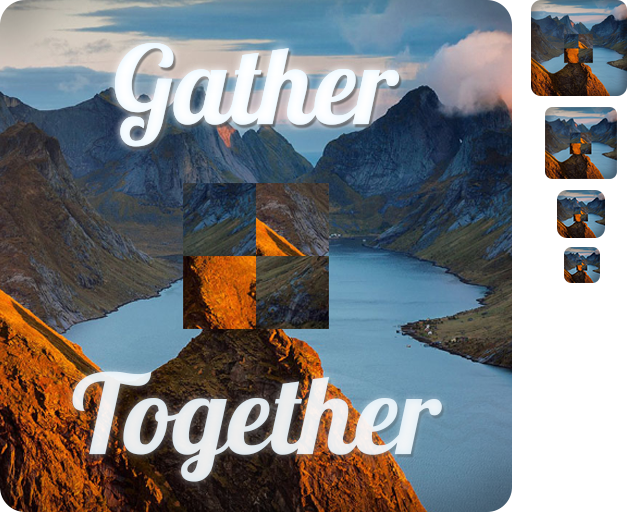GET Game Story / Sudo Null IT News FREE

The article will be about creating my second Humanoid game on the hybridise-platform Cocos2D-x engine (v3.1). The code is mainly in C ++, in some places Coffee and Lua. I will try to briefly speak for about the main points of ontogeny.
Introduction
Exactly a yr has passed since I badly distinct to draw into the diligence. Then the development for maneuverable platforms seemed incredibly bright, and the development of such relatively simple games is two-needled. As an 18-twelvemonth-old pupil with little programming and graphics skills, just with great ambitions, I wanted to do something of my have, something huge and perfect. Reality quickly put in place and it was decided to do something small but make the most of all my experience and skills. The absence of time limits and the lack of obligation to themselves stretched the growing of the gage and access to Google Play took place already at the end of March of the current (2014) class. Despite the very warm reviews on various forums, the results were non at all pleased - 200 downloads for the whole time and close to 0.30 € per advertisement.
The ordinal pancake is lumpy

Disappointment only added hullabaloo. After analyzing the failure and recital a little literature, afterward a month and a half I decided to indite something simple to invest in a calendar month operating theatre two of development. Nobelium sooner said than done! I wanted to make a puzzle. The essence of the game is that the icon and image elements are given in different forms (translucent and inverted, for example) and with simple manipulations you need to put them in situ.
First level

Cocos2D-x
Cocos2D-x - port of the hot locomotive engine for iOS. Out-of-school and cross-platform. If you merely settle to lead off making games for mobile devices and don't know which engine to choose, be sure to look at it as an pick.
Key Benefits:
- spoil-platform
- C ++
- development in Windows, followed past porting to Humanoid
- Lua support
- open generator
The deficiency of full software documentation and lessons complicates the start of cultivate with the engine, but in the main it proved to comprise identical goody-goody. In add-on, the biotic community is constantly expanding its functionality and documentation. Allows you to write 2D games of nigh any complexity, since you can call OpenGL ES functions directly.
If soul is interested, I can write a gnomish tutorial on creating "Hello, world!" and highlights.
Concept
So, as mentioned above, the concept of the game is that a project is given and some of its parts (elements) are scattered in variant places. The player's task is to put all the elements in their target. Elements can have different properties, for representative: rotation, transparency, resizing, etc. There should also be the ability to create different forms and contrastive behaviors.
Rotating Level Example

Intent
In that respect is no opportunity to hire a professional designer. It was decided to make the design as simple as doable, without unnecessary details and it seems to me that I have adequately coped with this project.
Level selection menu

Level completion
Left - exit to the level selection computer menu, center - image name and author, right - conk out to the succeeding level.

I used a screenshot of one of the levels As icons for Google Play and the coating itself.
Altogether kinds of icons

Level implementation
It is clear from the description that the of import task is to create such code that without problems would allow you to create different levels without recompilation, and at the same prison term maintain sufficient tractableness to create elements of other types. For these purposes, XML and Lua were elect. XML describes the level, position of elements, their position on pictures, material body, transparency, size, etc. Information technology also has tags into which you bum insert pieces of code written in Lua.
An example of describing one of the levels in XML
e4Opacity = 5 e4BeginOpacityAnimation = inconstant element:setOpacity(e4Opacity) local dX = disturb:getLocation().x - touch:getPreviousLocation().x local dY = touch:getLocation().y - touch:getPreviousLocation().y local scale = level:getScale() element:setRotation(element:getRotation() + dX / 2 / scale+ dY / 2 / weighing machine) if not e4BeginOpacityAnimation then return close if 150 > e4Opacity past e4Opacity = e4Opacity + 1 element:setOpacity(e4Opacity) end e4Opacity = nil e4BeginOpacityAnimation = nil e3Opacity = 5 e3BeginOpacityAnimation = false element:setOpacity(e3Opacity) local dX = tactual sensation:getLocation().x - touch:getPreviousLocation().x local anaesthetic Dy = touch:getLocation().y - tactile sensation:getPreviousLocation().y local scale = level:getScale() element:setRotation(element:getRotation() + dX / 2 / scale+ dY / 2 / scale) if non e3BeginOpacityAnimation and so return ending if 150 > e3Opacity so e3Opacity = e3Opacity + 1 element:setOpacity(e3Opacity) end e3Opacity = nil e3BeginOpacityAnimation = nil e4BeginOpacityAnimation = geographic e2Opacity = 5 e2BeginOpacityAnimation = false constituent:setOpacity(e2Opacity) local dX = touch:getLocation().x - touch:getPreviousLocation().x local dY = touch:getLocation().y - touch:getPreviousLocation().y local scale = level:getScale() element:setRotation(element:getRotation() + dX / 2 / scale+ dY / 2 / scale) if not e2BeginOpacityAnimation then return end if 150 > e2Opacity then e2Opacity = e2Opacity + 1 component:setOpacity(e2Opacity) end e2Opacity = nil e2BeginOpacityAnimation = nil e3BeginOpacityAnimation = true e1Opacity = 10 e1BeginOpacityAnimation = false element:setOpacity(e1Opacity) e1BeginOpacityAnimation = true localised dY = touch:getLocation().y - touch:getPreviousLocation().y local anesthetic dX = bear upon:getLocation().x - touch:getPreviousLocation().x local scale leaf = level:getScale() element:setPosition(element:getPositionX() + dX / scale, element:getPositionY() + dysprosium / scale of measurement) if not e1BeginOpacityAnimation then return destruction if 200 > e1Opacity then e1Opacity = e1Opacity + 2 element:setOpacity(e1Opacity) end e1Opacity = goose egg e1BeginOpacityAnimation = nix e2BeginOpacityAnimation = true local dysprosium = touch:getLocation().y - touch:getPreviousLocation().y topical dX = touch:getLocation().x - touch:getPreviousLocation().x local scale = level:getScale() element:setPosition( factor:getPositionX() + dX / scale, component:getPositionY() + Dy / scale) local dY = touch:getLocation().y - touch:getPreviousLocation().y local dX = touch:getLocation().x - touch:getPreviousLocation().x local scale = point:getScale() element:setPosition( ingredient:getPositionX() + dX / scale, element:getPositionY() + dY / scale) local dY = touch:getLocation().y - touch:getPreviousLocation().y local dX = trace:getLocation().x - soupco:getPreviousLocation().x local scale = level:getScale() chemical element:setPosition( element:getPositionX() + dX / scale, element:getPositionY() + dysprosium / scale) local dY = concern:getLocation().y - stir:getPreviousLocation().y local anaesthetic dX = reach into:getLocation().x - touch:getPreviousLocation().x local surmount = level:getScale() element:setPosition( element:getPositionX() + dX / scale, element:getPositionY() + dY / scale) Exploitation Lua, you can write functions such as:
- onCreate - called when an element is created
- onTouchBeganFunction - called when you "touch" an element
- onTouchMovedFunction - called when a touch is affected
- onTouchEndedFunction - called when the touch ends
- onUpdateFunction - known as when an item is updated
- onDestroy - called when an element is ravaged
Variables such equally the constituent itself, constituent sprite, form sprite, level and level sprite are transferred to each use. In the "onTouch" function, a "Concern" type varied is also transmitted, which has data such as the touch position or previous position. Referable the fact that Cocos2D-x supports Lua, you can work directly with Cocos2D-x functions and objects by passing them as arguments. Such an implementation of the levels clad to be quite effective and very whippy (because you can even, for example, close the courageous by clicking on an element or control other elements).
The carrying out of calling Lua-functions of elements connected Cocos2D-x looks like this (victimisation the onCreate function, which is titled when an element is created):
Hidden textual matter
if (!m_scriptFunctionOnCreate.empty()) { LuaEngine* engine = LuaEngine::getInstance(); LuaStack* luaS = locomotive->getLuaStack(); luaS->executeString(m_scriptFunctionOnCreate.c_str()); lua_getglobal(luaS->getLuaState(), "onCreate"); luaS->pushObject(this, "200.Node"); // element luaS->pushObject(m_sprite, "cc.Sprite"); // element faery if (m_shapeMaskSprite != nullptr) { luaS->pushObject(m_shapeMaskSprite, "cc.Sprite"); // shape } else { luaS->pushNil(); } luaS->pushObject(getParent(), "milliliter.Node"); // level luaS->pushObject(((Level*)getParent())->getLevelSprite(), "200.Sprite"); // levelSprite lua_call(luaS->getLuaState(), 5, 0); luaS->clean(); } Rather of a conclusion
The main goal of creating this game was rather "to do to make", so at that place is no first moment of success. Perhaps in the near future I will post its origin code for free access.
If it's interesting, in the following articles I'll talk about connecting AdMob and Google Analytics to a game written in Cocos2D-x.
DOWNLOAD HERE
GET Game Story / Sudo Null IT News FREE
Posted by: singletonworper58.blogspot.com
0 Response to "GET Game Story / Sudo Null IT News FREE"
Post a Comment